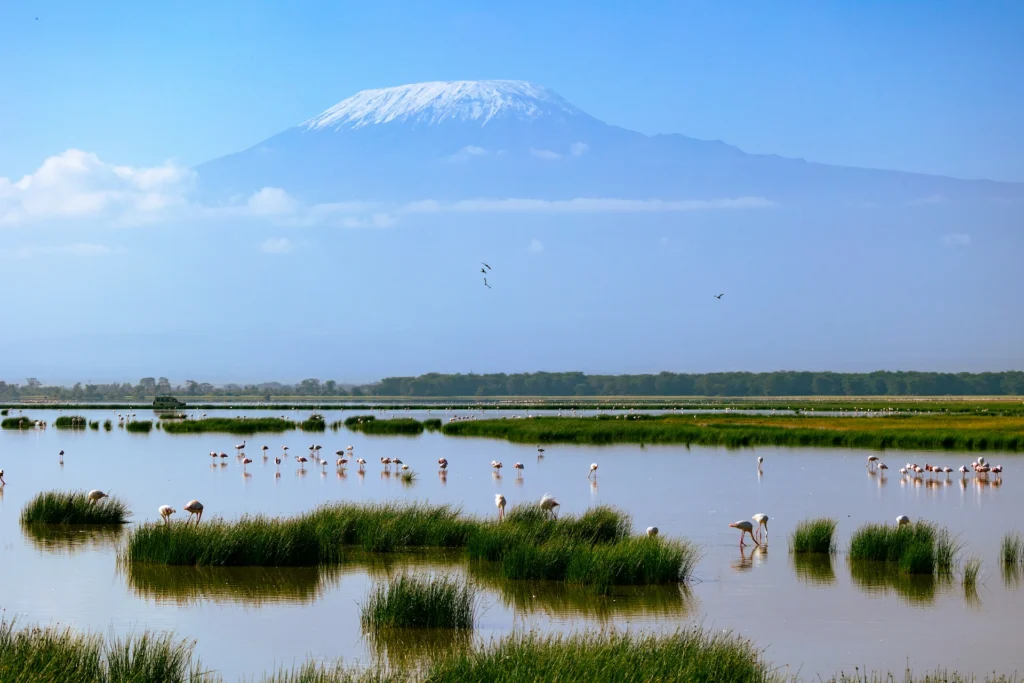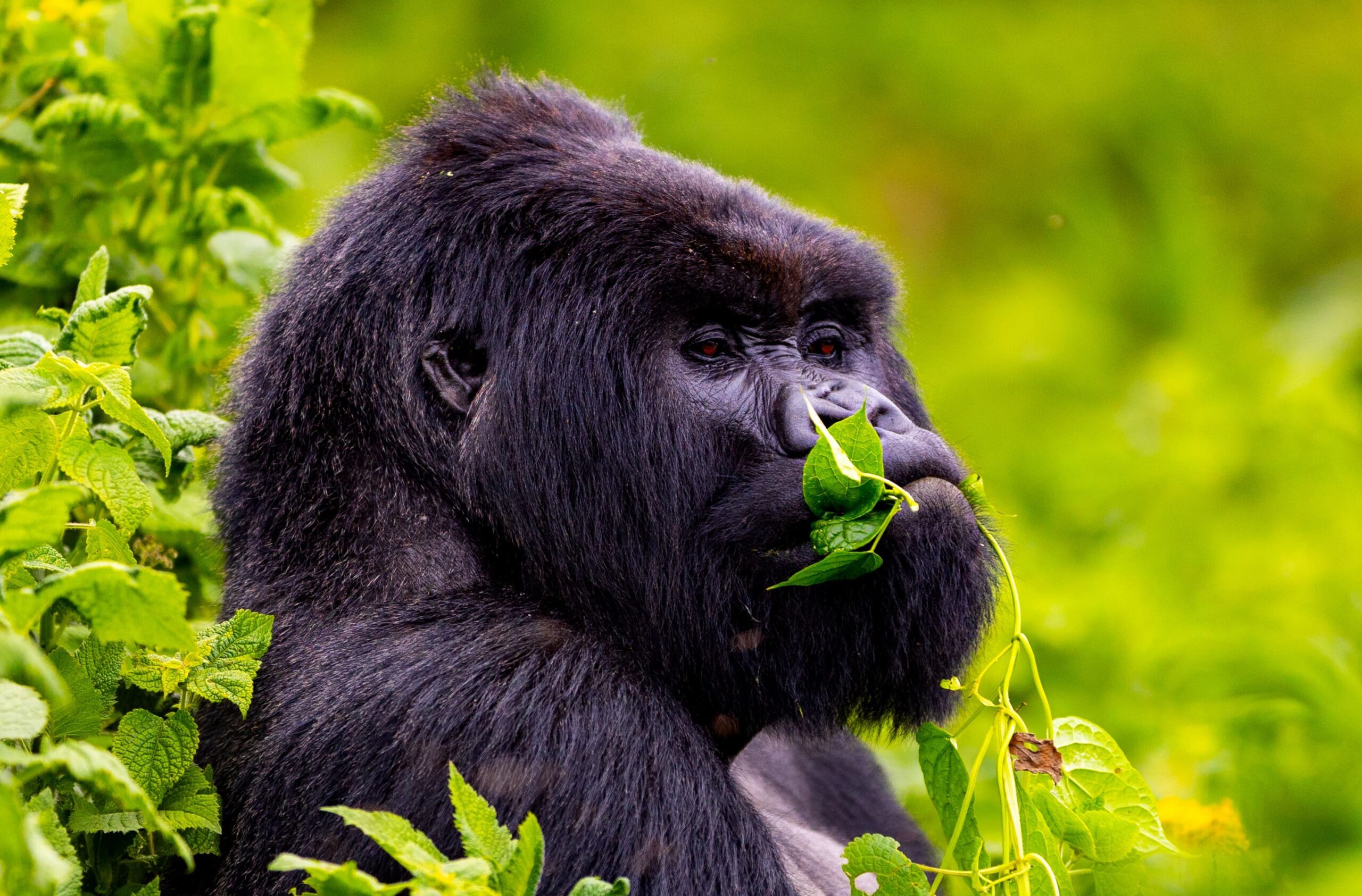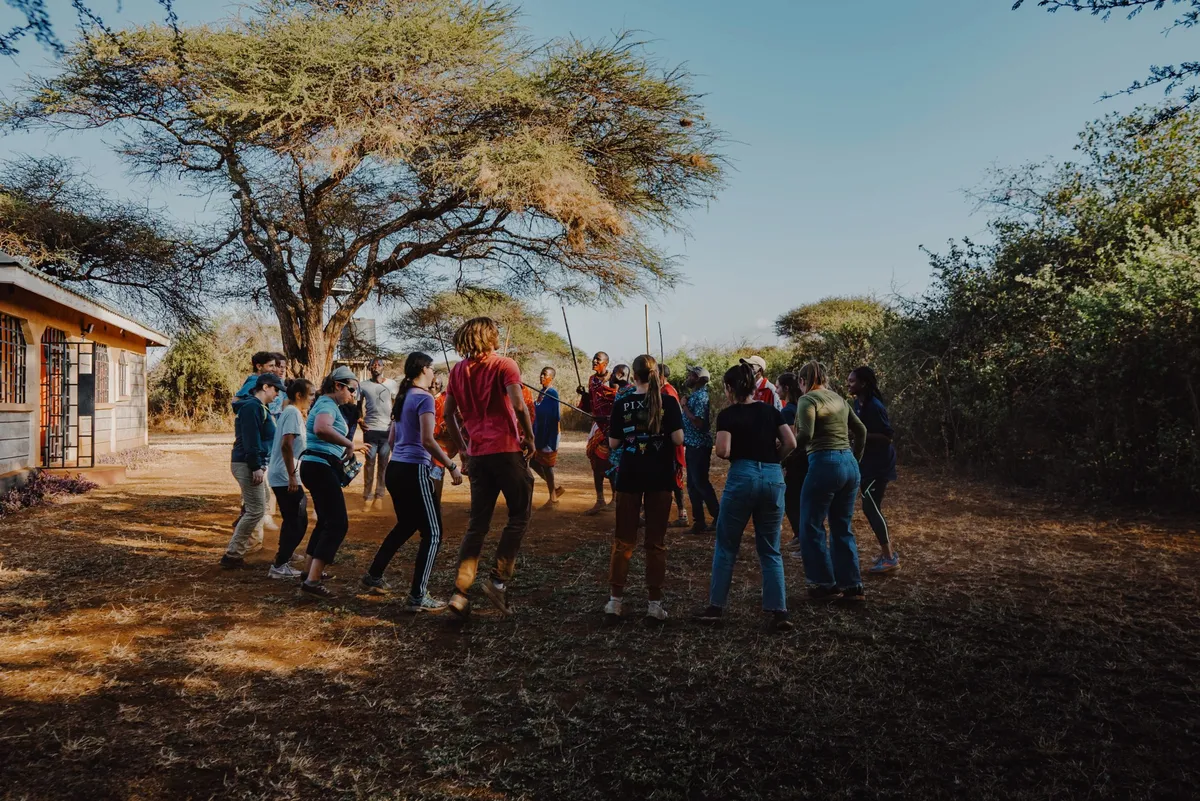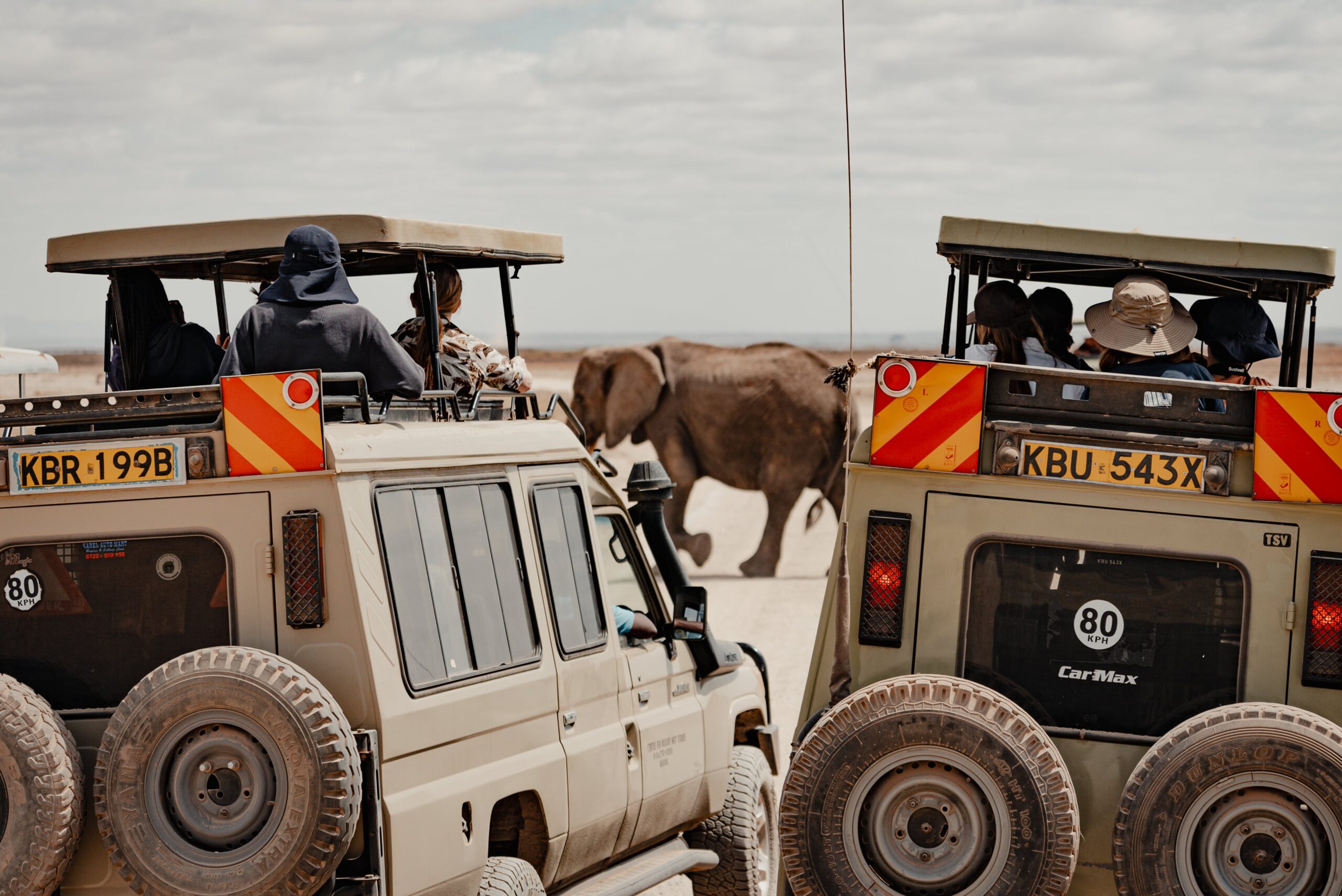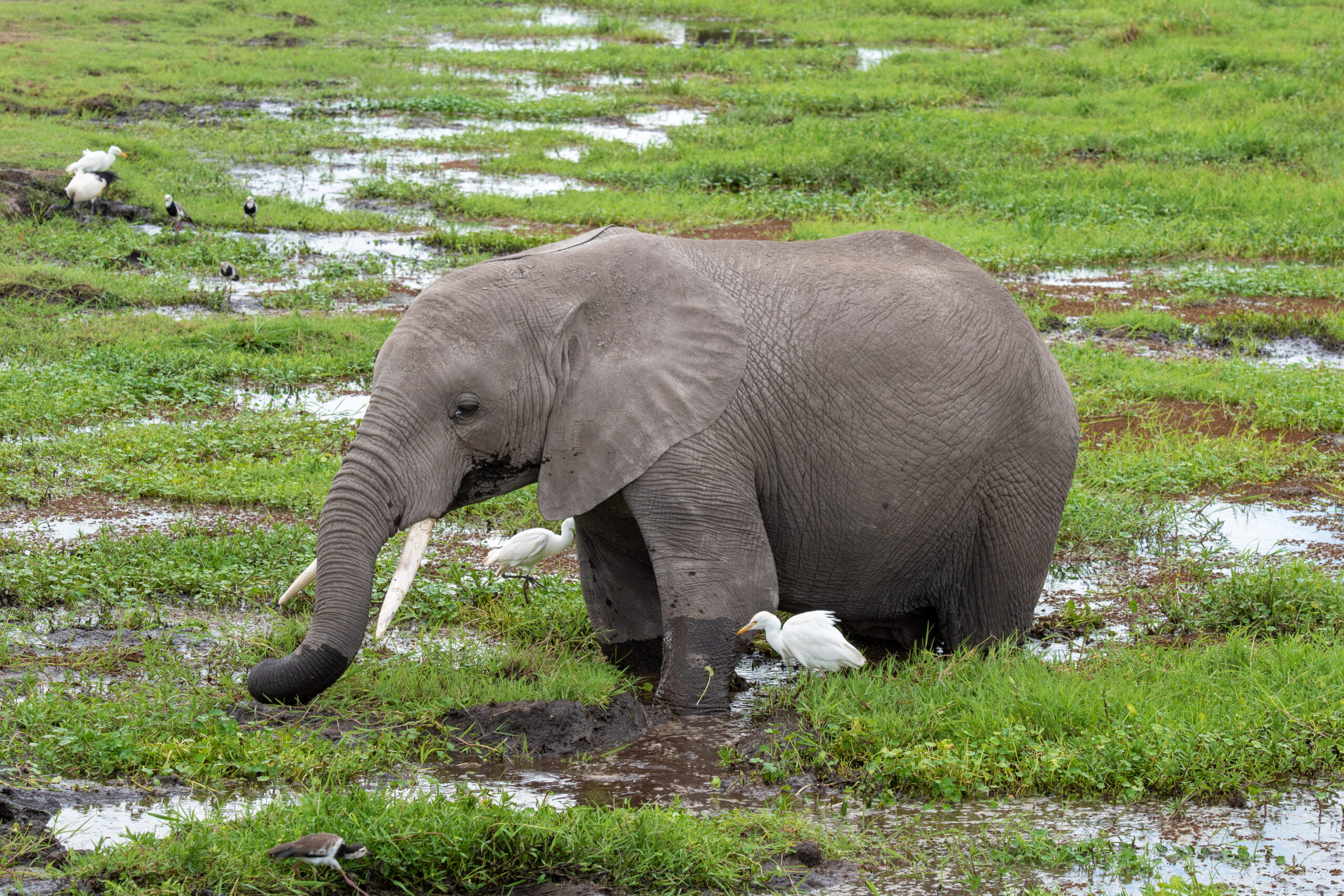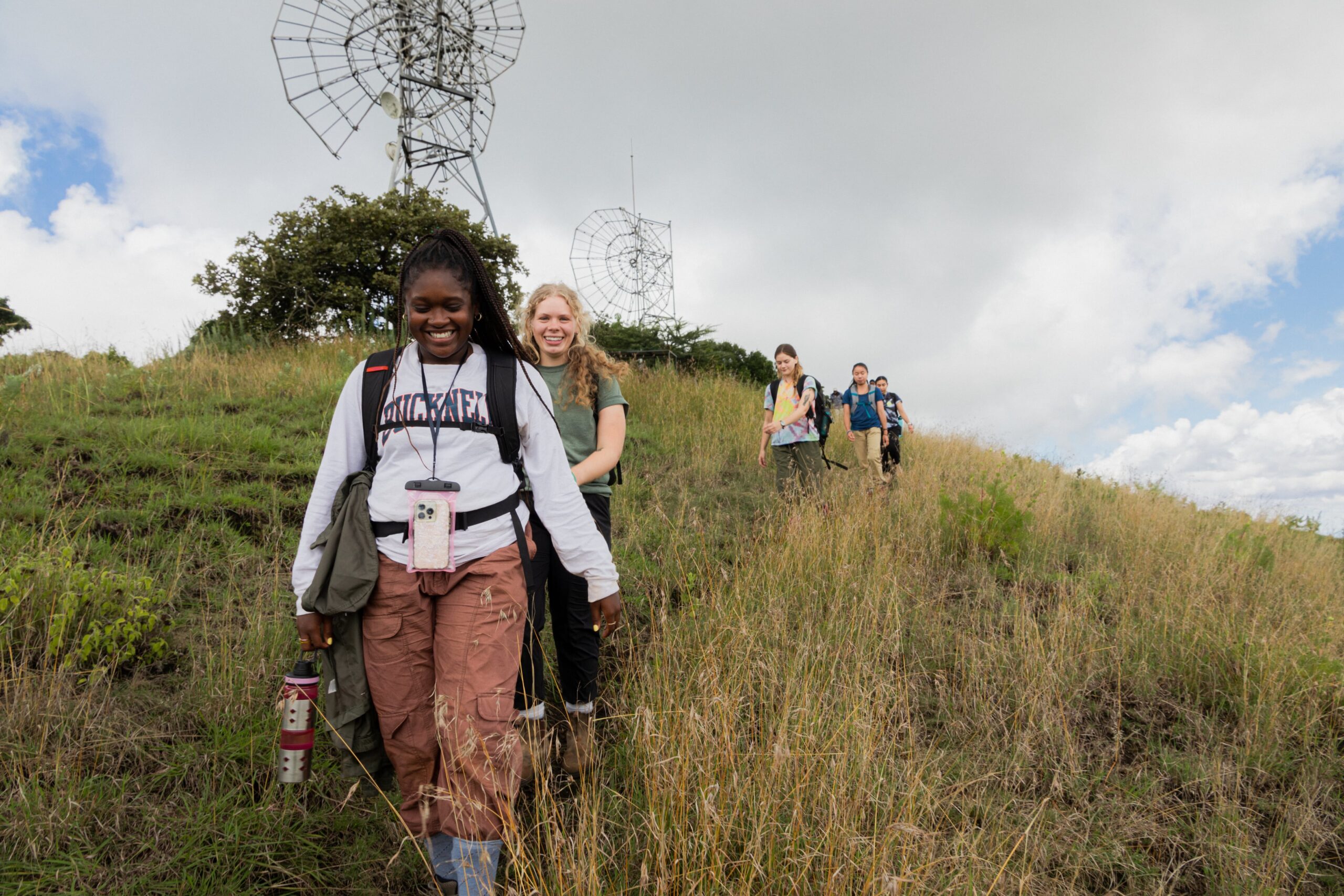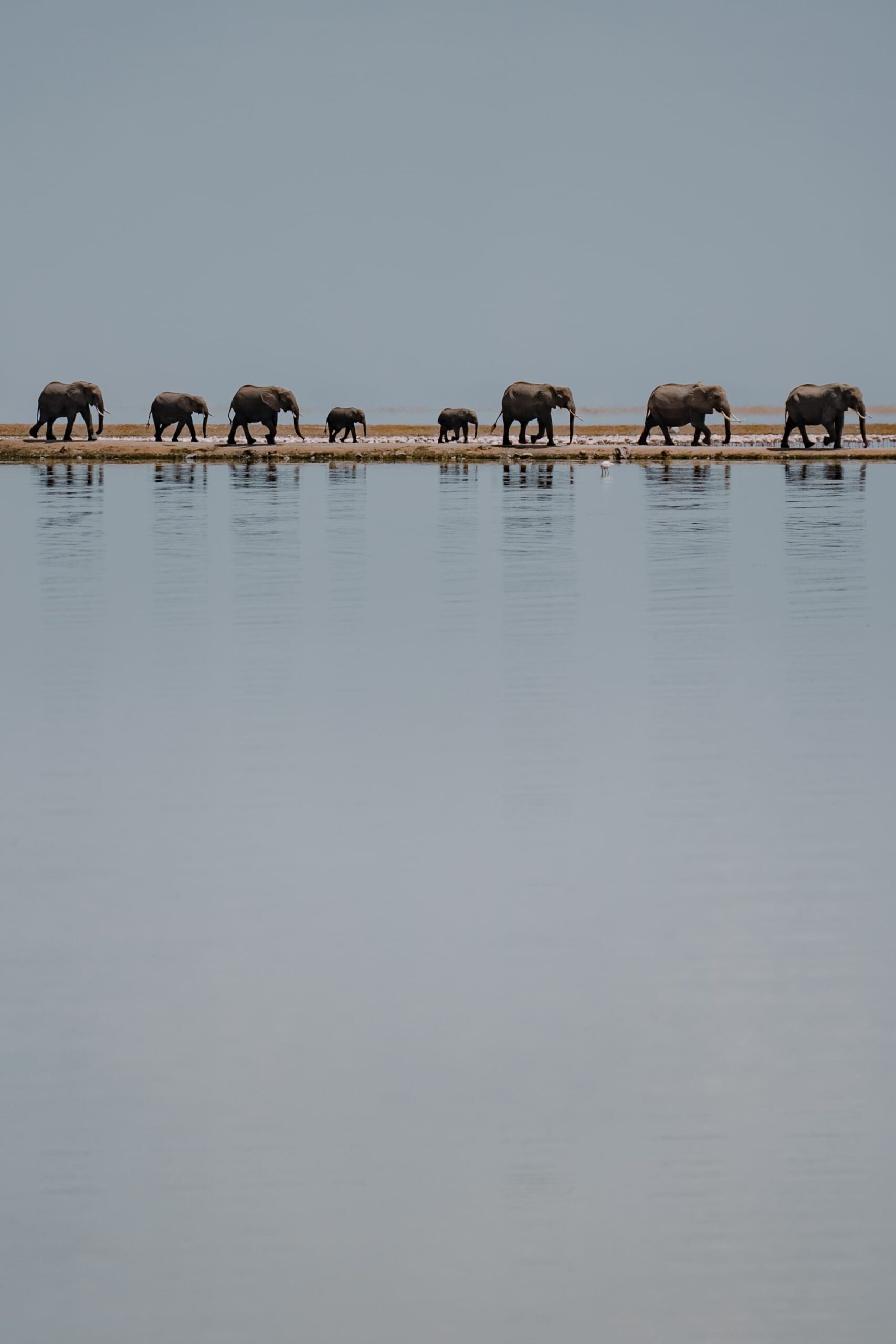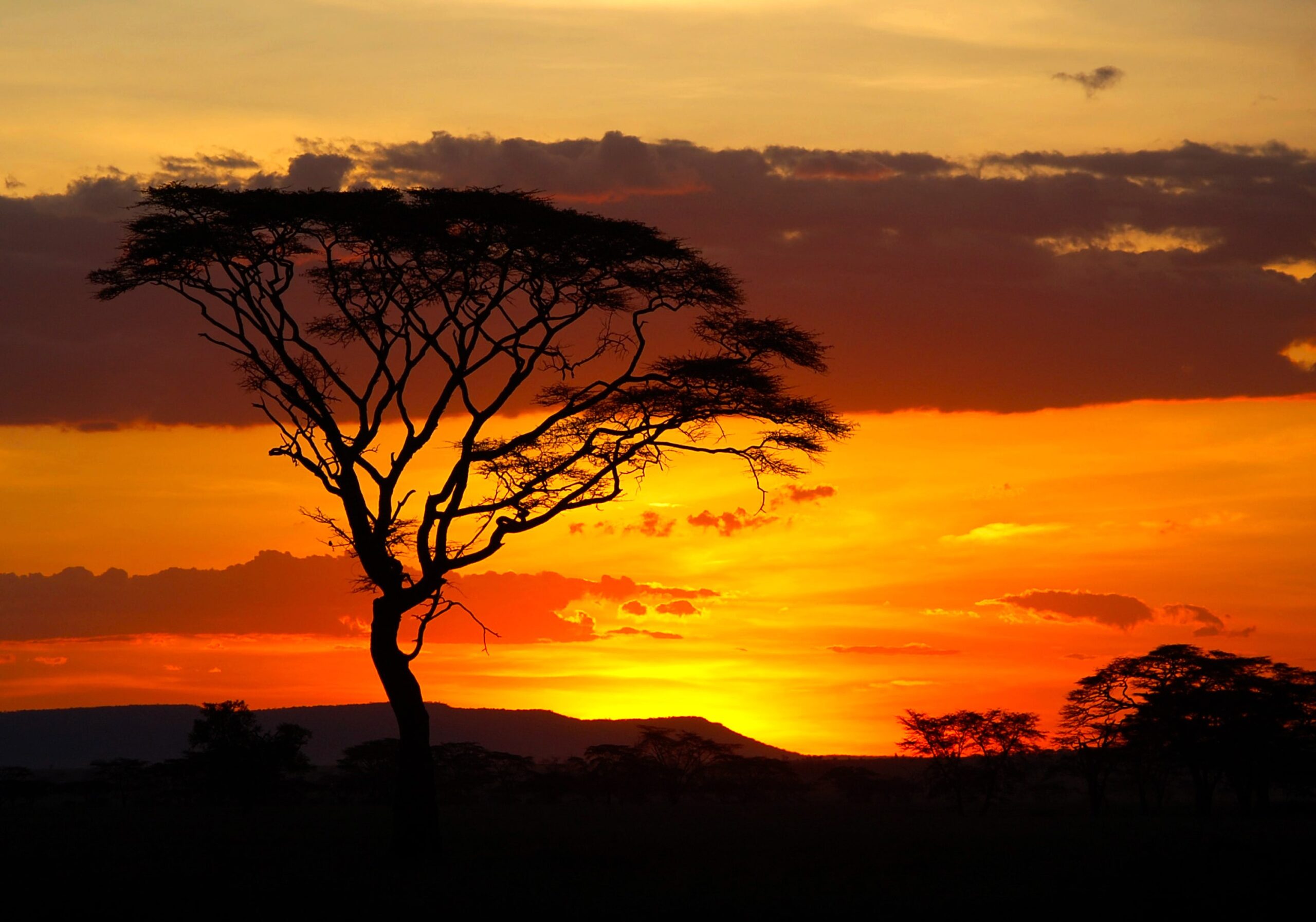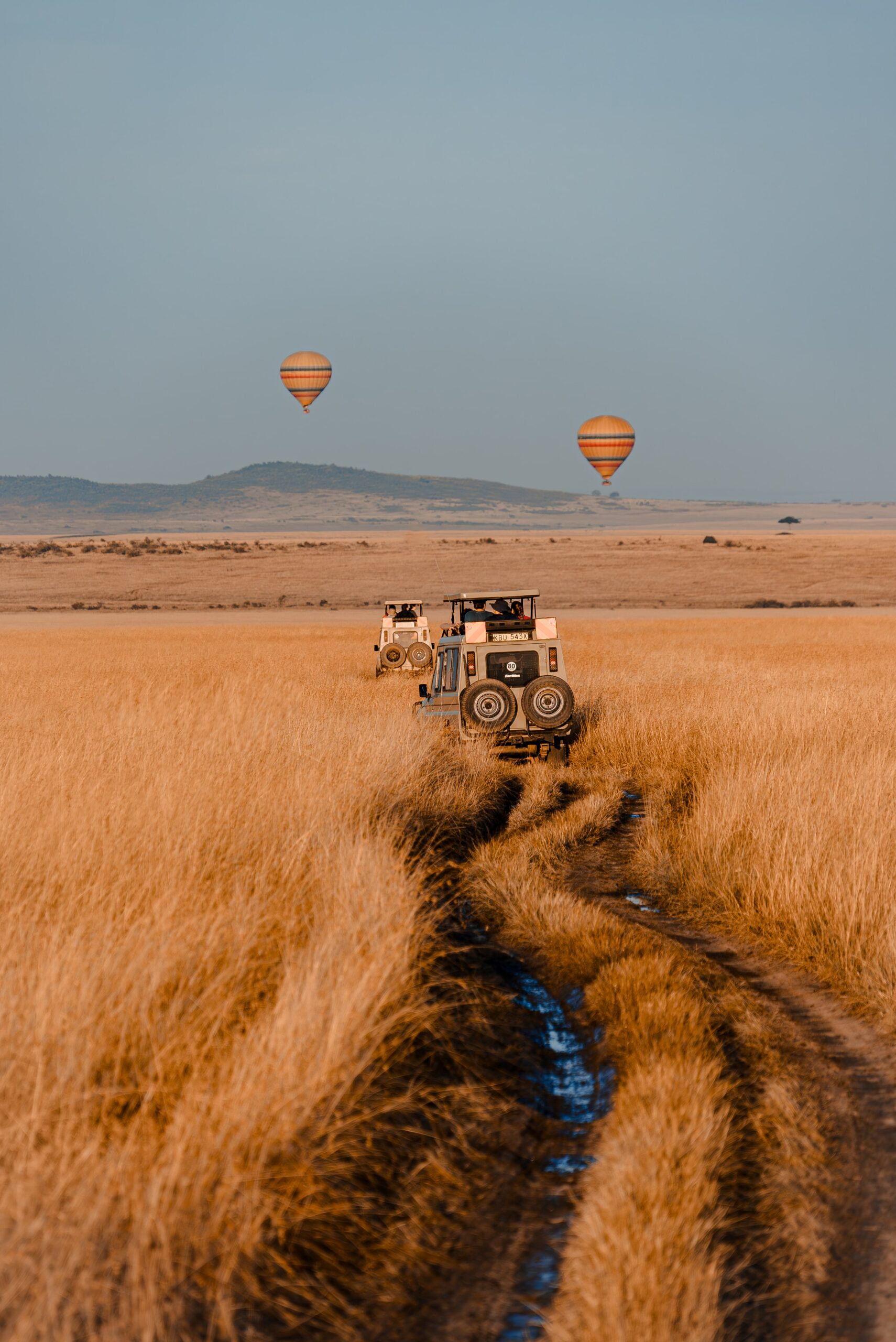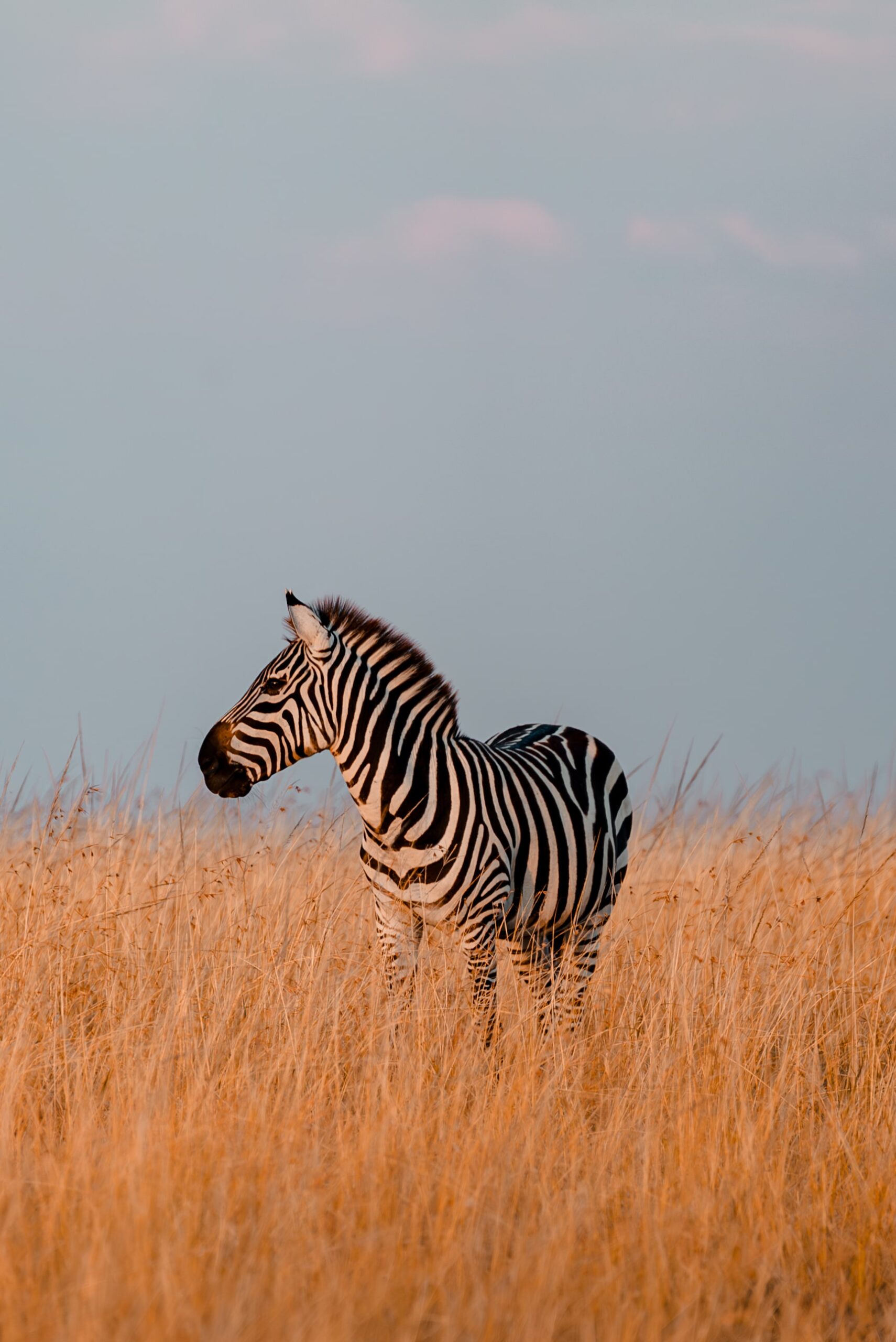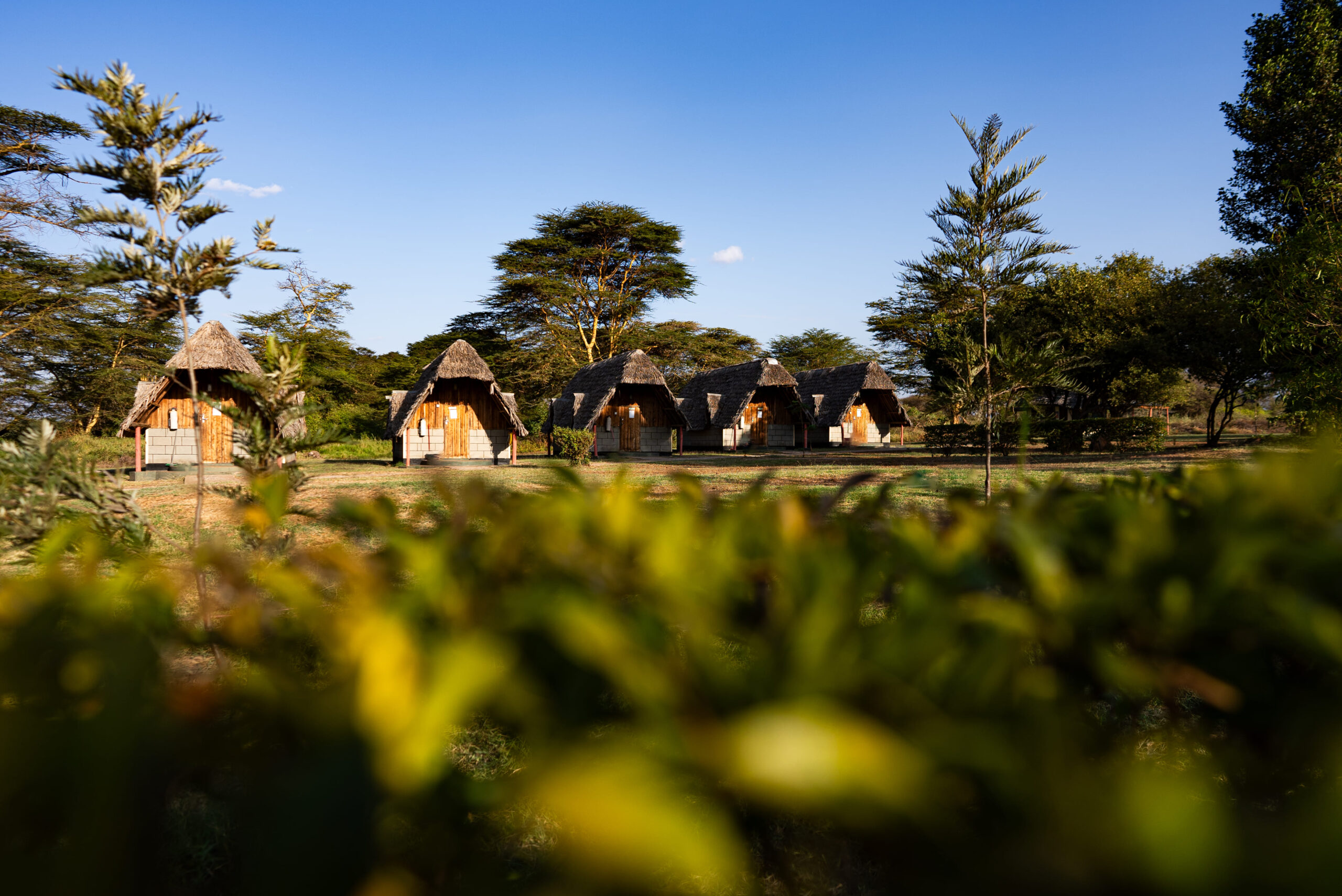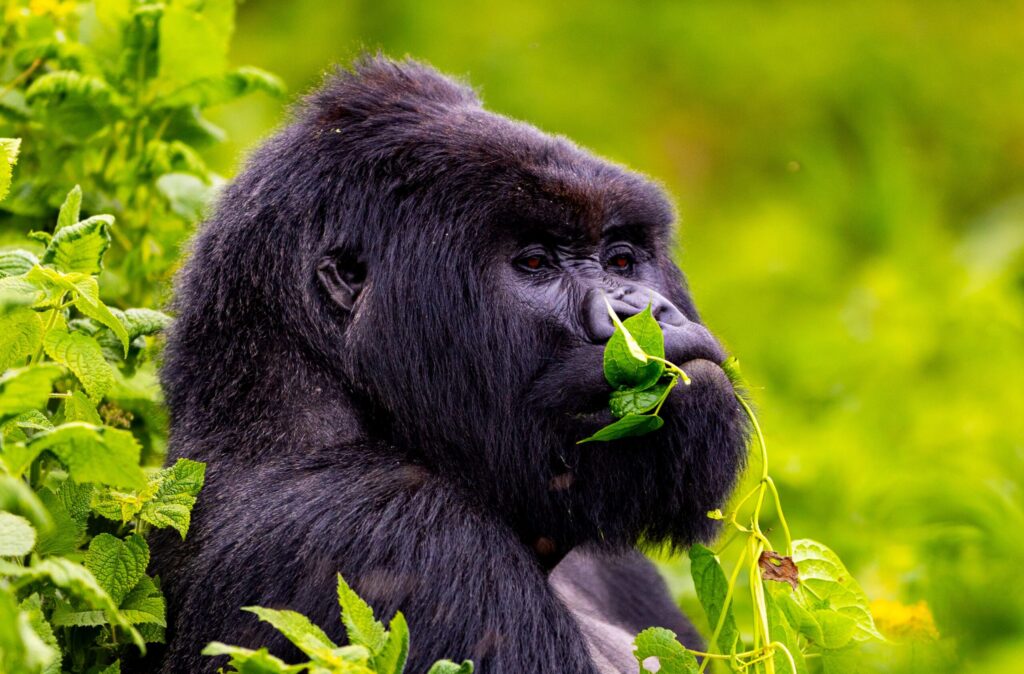
Program Costs
- Tuition
- Room & Board
- Total
Application Deadlines
Resources
Endangered Species
Beneath Mount Kilimanjaro, students track elephants moving through Amboseli’s wetlands, where papyrus rings open pools and giraffes drift along the acacia edges. At nightfall, lions skirt Maasai bomas, underscoring the tension of shared space. That theme of coexistence continues northward, as students journey to Rwanda’s volcanic highlands. Here, in the cloud forests, they kneel to observe mountain gorilla families feeding, playing, and resting. Research on wildlife corridors often takes place alongside farmlands and settlements, where lions and other species overlap with human activity. Between camera traps, migration maps, and conversations with herders about predator conflict, students learn how people and wildlife persist together across two of Africa’s most iconic landscapes.
- Track and age Amboseli’s savanna elephants using scan sampling to construct detailed behavioral ethograms.
- Observe endangered mountain gorillas in Rwanda’s volcanic highlands under strict conservation guidelines, recording social interactions, feeding patterns, and family structures.
- Analyze wildlife corridors against newly farmed parcels, comparing shifts in animal movement patterns with land-use records.
- Deploy and monitor camera traps to identify lions, rhinos, and cheetahs, integrating findings into long-term datasets.
- Conduct Directed Research: frame a stakeholder-driven question, collect and analyze field data with faculty guidance, and present actionable findings to local partners.
Academics
This academically rigorous program follows a six-day/week schedule. Each program combines theory learned during classroom sessions with field-based applications. The interdisciplinary curriculum is designed to help students actively discover and understand the complexities of environmental, social, and economic issues in Kenya.
Major academic themes include:
- Wildlife management
- Climate change resilience
- Water conservation
- Wildlife ecology and behavior
- Conservation strategies
- Community governance of protected areas
- National parks management
Courses
On the Endangered Species program, you will take three 4-credit disciplinary courses, one 2-credit language and culture course, and a 4-credit capstone Directed Research course. Courses are participatory in nature and are designed to foster inquiry and active learning. Each course combines lectures, field exercises, assignments, tests, and research. All courses are taught in English.
Introduction to Swahili Language and East African Tribal Communities
This course contains two distinct but integrated modules. The Swahili language module offers listening, oral, and written practice of the Swahili language, at a basic level of proficiency, to increase students’ communication and comprehension skills. The sociocultural aspects of Kenyan tribe’s module emphasize understanding of, and direct contact and interaction with, the native communities with which SFS works, primarily the Maasai. This exposure to culture and language is reviewed and processed through lectures, field exercises, and classroom discussion. The sociocultural module is designed to help students engage in the culture and be therefore more adept at working effectively in their Directed Research efforts.
Endangered Species Conservation
The Endangered Species Conservation course aims to provide students with a comprehensive understanding of the historical context and principles of conservation and management, particularly in resource management. It explores the utilitarian approach that advocates for sustainable management of renewable resources to prevent their exhaustion. The course emphasizes the urgent need for efficient utilization of available resources to address the contemporary challenges of species extinction, ecosystem degradation, and fragmentation of indigenous vegetation. Students will learn about the decision-making processes involved in determining the threatened status of species, selecting appropriate management strategies, and allocating resources effectively. The course specifically focuses on the landscape dynamics of East Africa Savanna Ecosystems and their impact on the vulnerability of wildlife species. It examines regional and Kenyan conservation efforts and provides hands-on training in field techniques for assessing and monitoring vulnerable species. The course also employs a comparative approach to evaluate the effectiveness of different management systems at local, regional, and global scales. Overall, students will gain practical knowledge and skills that will be applied to meet the objectives of the Directed Research component of the course.
Ecology of Endangered Wildlife
This course explores the concept of biodiversity and its significance in sustaining human life on Earth. Biodiversity encompasses various living organisms, including plants, animals, fungi, and microbes, as well as the diversity of ecosystems and genetic variation. It provides numerous values, both intrinsic and utilitarian, such as fuel, medicine, food, and ecological services like water purification and climate regulation. Biodiversity also holds cultural and recreational values and profoundly shapes human societies. However, human activities have caused a rapid decline in biodiversity, with many species facing extinction. The IUCN Red List highlights the alarming number of species at risk, primarily due to habitat loss, overexploitation, pollution, climate change, and invasive species. Conservation efforts have had mixed success, and the course will examine strategies and resources used to mitigate species vulnerability. The IUCN Red List serves as a vital tool for monitoring and informing conservation decisions globally, categorizing species based on their risk of extinction. Understanding the status and conservation of biodiversity is crucial for developing effective policies and initiatives to address the ongoing biodiversity crisis.
Human Dimensions of Endangered Species Conservation
This academic course focuses on the crucial role of biodiversity and its diverse values, both intrinsic and utilitarian, in sustaining human life on Earth. It explores the interconnectedness between humans and the natural world, emphasizing the need for meaningful cross-country collaboration, participation of local communities, and respect for human rights and cultural diversity in conservation efforts. The course delves into the human dimensions of conservation, drawing upon concepts from social sciences such as Anthropology and Political Ecology. It examines the relationships between people, endangered species, and their environment, investigating how human behavior, values, and knowledge influence and are impacted by decisions regarding the management of endangered species. The course seeks to achieve a balanced interaction between politics, economics, cultures, and technology to conserve and restore populations of endangered species while considering human well-being. By incorporating societal values into conservation planning and decision-making, students will gain a comprehensive understanding of the human dimensions of conservation and develop the necessary tools and methods for conservation research.
Directed Research – Kenya
This course prepares students to distinguish hidden assumptions in scientific approaches and separate fact from interpretation, cause from correlation, and advocacy from objectivity. Students learn specific tools including: experimental design; field techniques; basic descriptive statistics; and parametric and non-parametric quantitative analysis. Emphasis is placed on succinct scientific writing, graphic and tabular presentation of results, and effective delivery of oral presentations.
Core Skills
You will gain practical skills in the field such as: GIS, wildlife census techniques, natural resource valuation, water quality assessment, basic Swahili language skills, interview and survey methods, research design and implementation, quantitative and qualitative data collection and analysis, and research presentation.
Field Sites
You will visit different ecosystems and communities which may include: the vast savannas in the foothills of Mt. Kilimanjaro, national parks and wildlife management areas in the Amboseli-Tsavo ecosystem, ranches and farms, rural villages, Maasai Mara National Reserve, conservancies and farms, acacia forests, Indigenous communities, and migratory wildlife corridors.
Other Kenya Programs
Endangered Species
More Information
Program Costs
- Tuition
- Room & Board
- Total
Elephants of the African Savanna
More Information
Program Costs
- Tuition
- Room & Board
- Total
Wildlife Health and Conservation
More Information
Program Costs
- Tuition
- Room & Board
- Total

